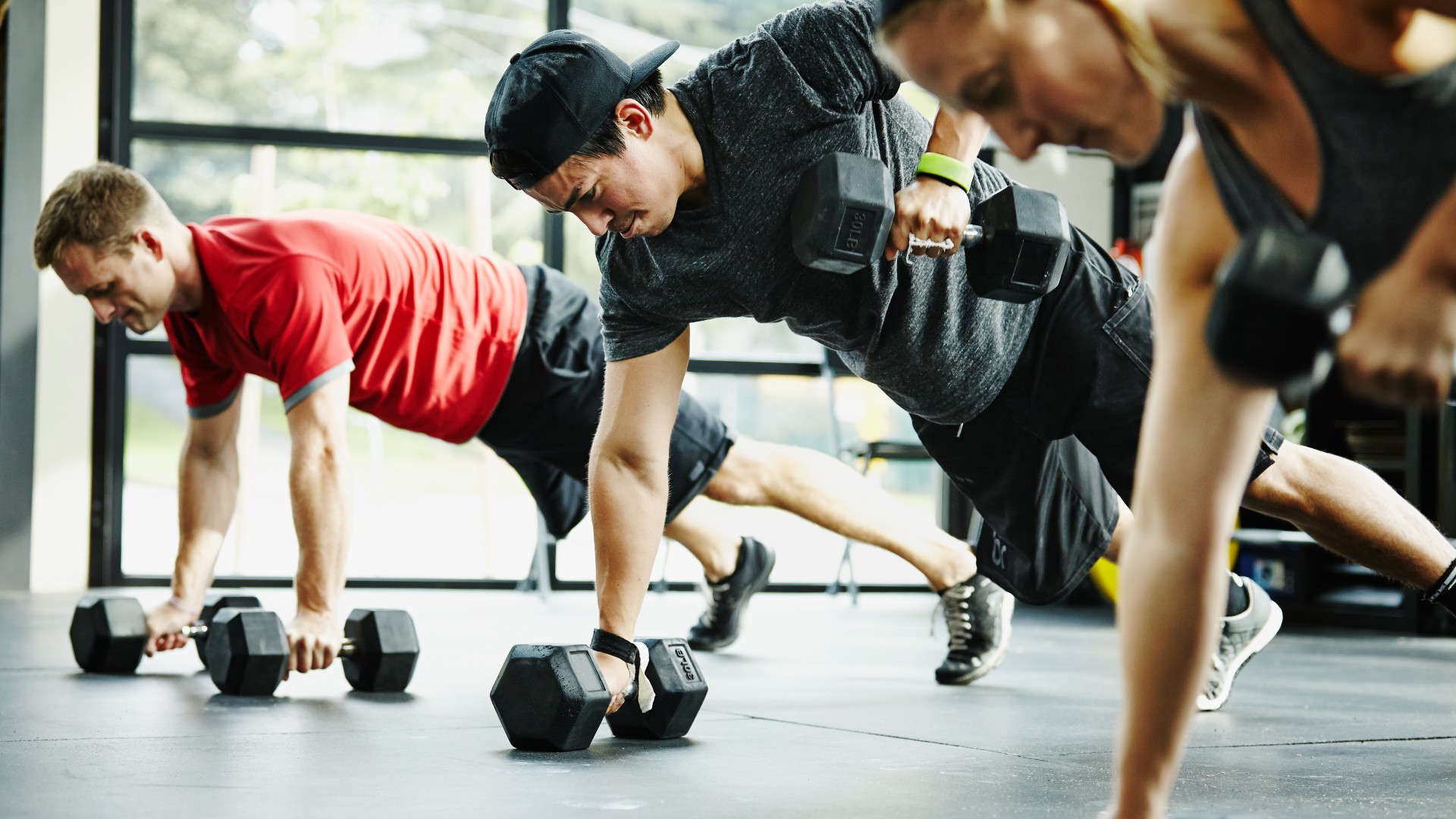
The term “functional training” gets used a lot in fitness circles, but unlike some exercise jargon you can safely forget, functional training shouldn’t be one of them.
Functional workouts are (one of) the best ways to build full-body strength, muscle mass, and power, and a wealth of research backs it up. Incorporating functional moves into your exercise regime could also improve coordination, balance, and mobility, which should help you improve how you move during daily activities.
You can perform a functional training program using some of the best adjustable dumbbells, kettlebells, and resistance bands or even using just your body weight — a form of training called calisthenics. Whether you prefer to follow a strength program or cardio fitness class, functional exercises should be a part of it. Below, we cover the benefits of functional training and exercises to add to your routine.
What is functional training?
Compound exercises that recruit multiple muscle groups, like push-ups, pull-ups, and squats, sit under the big “functional” umbrella, whether you lift weights or not. “Function” means that the workout serves a specific purpose for your body outside of hitting the gym, closely following movement patterns that you would expect to perform each day, including walking, jumping, pushing, or pulling.
For example, if you practice bending down and lifting weights during a functional workout, you’ll learn to engage your core, bend your knees, raise your chest, and lift from a deadlift or squat position. When you pick up your shopping, you might adopt the same technique.
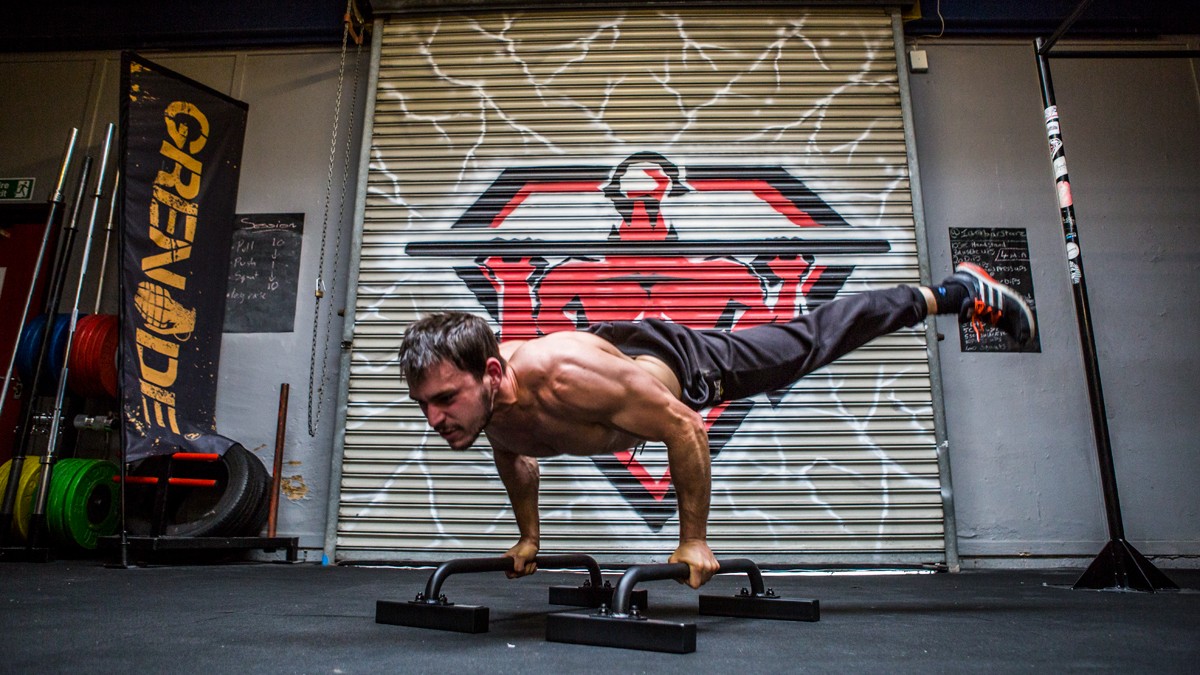
Functional workouts also form a big part of CrossFit athletes training and Hyrox workouts. Strength and conditioning coaches often program functional exercises into sport-specific training programs like football or basketball. For example, box jumps are a popular exercise to train for sports that require jumping because the movement develops powerful legs and improves jump strength.
Functional moves aren’t the only component of functional training. The direction you move also matters. Planes of motion include the sagittal (forward and backward movement), transverse (rotation), and frontal (side-to-side). For example, lunges occur in the sagittal plane, lateral lunges in the frontal plane, and Russian twists in the transverse plane.
Get instant access to breaking news, the hottest reviews, great deals and helpful tips.
Multiplanar motion helps to target more muscles efficiently, hitting muscles you might otherwise miss, like the obliques (located down your waist) and smaller back muscles.
Functional training benefits
Functional training, especially calisthenics, is versatile and suitable for beginners and more advanced gym bunnies. Because the moves recruit multiple muscles and joints together, the body can become more flexible, mobile, and agile if regularly performed alongside mobility exercises. An exercise program comprising just five functional movements could give you a full-body workout, build stronger bones and muscles, and torch calories.
For example, I did the farmer’s walk every day for a week, which involved walking around holding two weights (literally, that’s it). That alone strengthens the muscles in your shoulders, arms, chest, core, and legs and can be added to push-ups, squats, or deadlifts to target all the major muscle groups in one session.
Moreover, functional workouts help prevent injury by helping your body work as a more efficient machine, also developing stronger core muscles by learning to engage them more often, improving the neuromuscular mind-body connection.
Functional training: free weights vs machines
It’s a debate I hear time and time again. When training clients, I favor free weights. Free weights help build a balanced body, working both sides of the body simultaneously without someone’s stronger side picking up the slack when lifting heavier weights. However, I love using barbells for programming strength training because it allows you to lift much heavier.
Both have pros and cons, but functional training benefits most from using free weights that allow your joints to work through a better range of motion and mimic more natural movement patterns. Navigating two weights teaches your body to improve coordination and stability.
Functional exercises for beginners to try
Although calisthenics includes basic movement patterns like push-ups or pull-ups, it also scales up to refined gymnastics. While you might not fancy handstands, there are plenty of effective and accessible functional exercises you can try that can be scaled up or down based on your fitness level. Add whatever weights or best home gym equipment you’d like to use, and add these to your next functional training workout.
1. Sled push
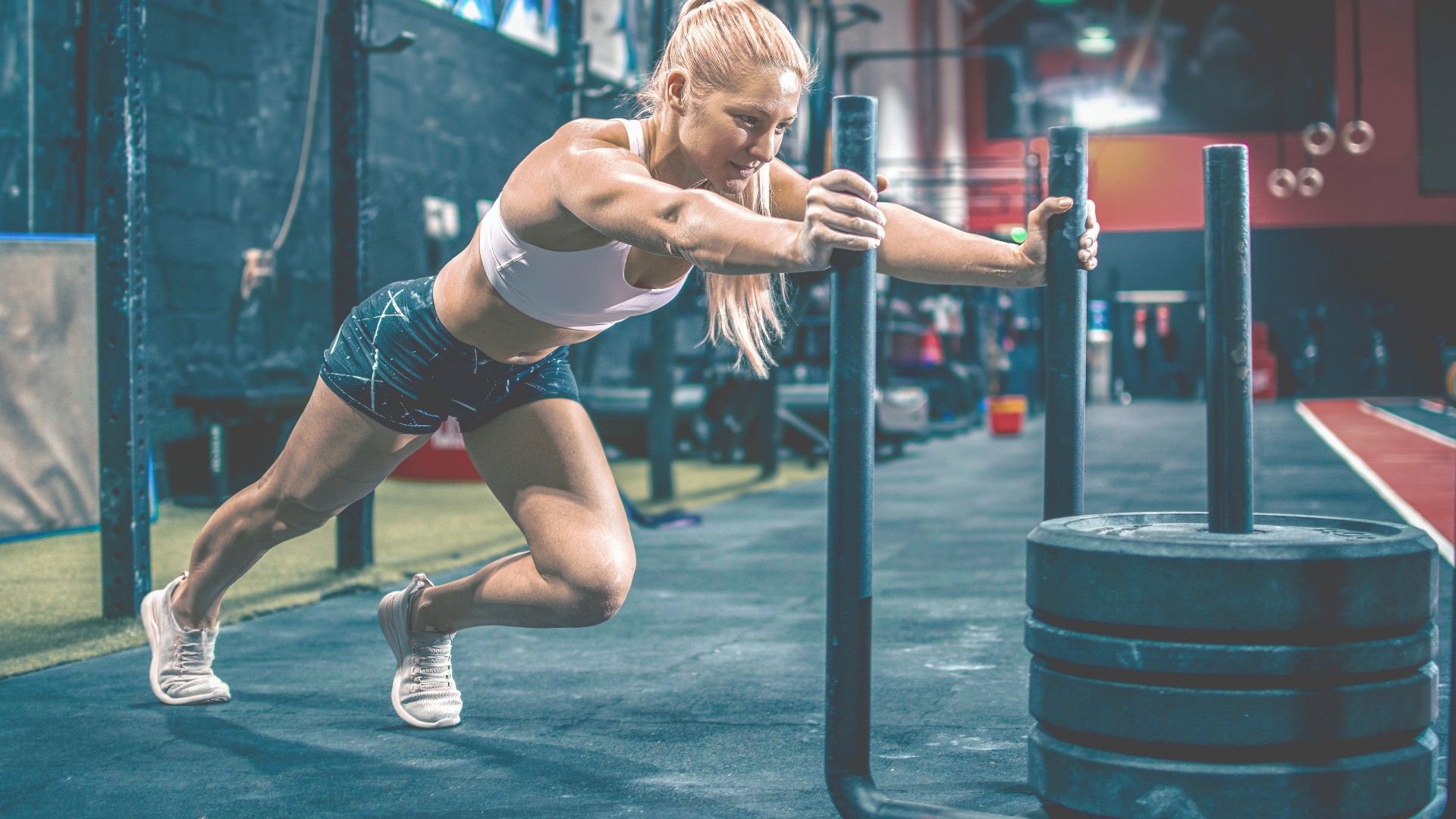
I recently did sled pushes every day for a week, and here’s what happened to my body (spoiler, it hurt!). Stack heavier weights for strength-based workouts and lighter ones for cardio.
- Grip the handles of the sled in front of you with your arms extended
- Adopt a sprint-start position with one leg forward and bent for stability, a flat back, and a neutral spine
- Contract your whole body, then push the sled forward
- Use a longer stride and drive your feet into the floor or opt for a shorter, faster stride for speed.
2. Farmer's walk
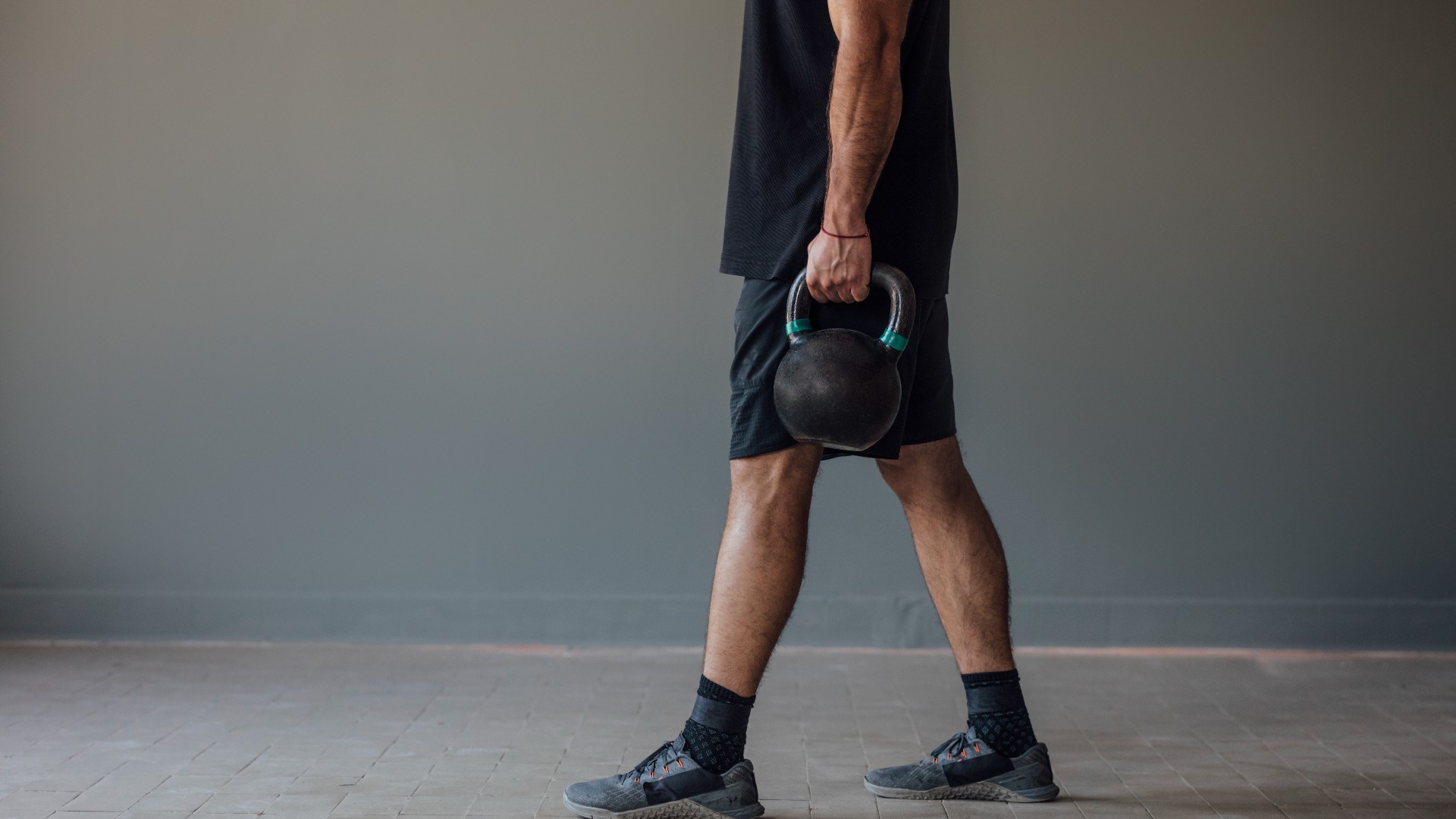
The farmer’s walk works your chest, shoulders, arms, core, glutes, and leg muscles. Here’s how to do it.
- Stand with your feet hip-width apart and two weights placed on either side of your feet
- Bend your knees and lower into a squat position with your chest proud and weight evenly distributed across both feet
- Grip both kettlebells, engage your core and set your shoulders back
- Keep your chest proud, look forward, and push the ground away to stand
- Begin walking with control and without leaning backward or over to one side.
3. Push-ups
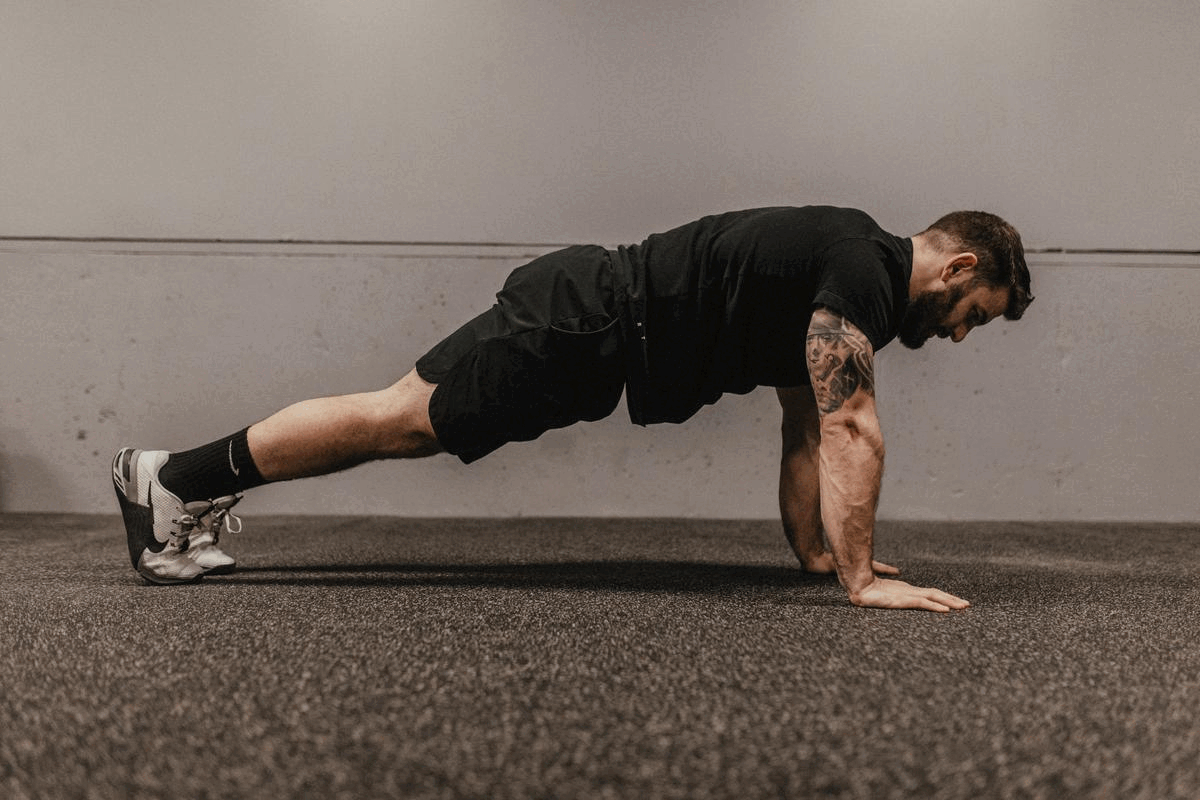
Learn how to do a push-up here. These bodyweight exercises help strengthen your chest, shoulders and arms.
- Start in a high plank position with shoulders, elbows, and wrists stacked
- Engage your core
- Keep a straight line from your heels to the crown of your head
- Bend your arms, lower your chest to the floor, pause, and then push the ground away back to your starting position.
4. Hex deadlift
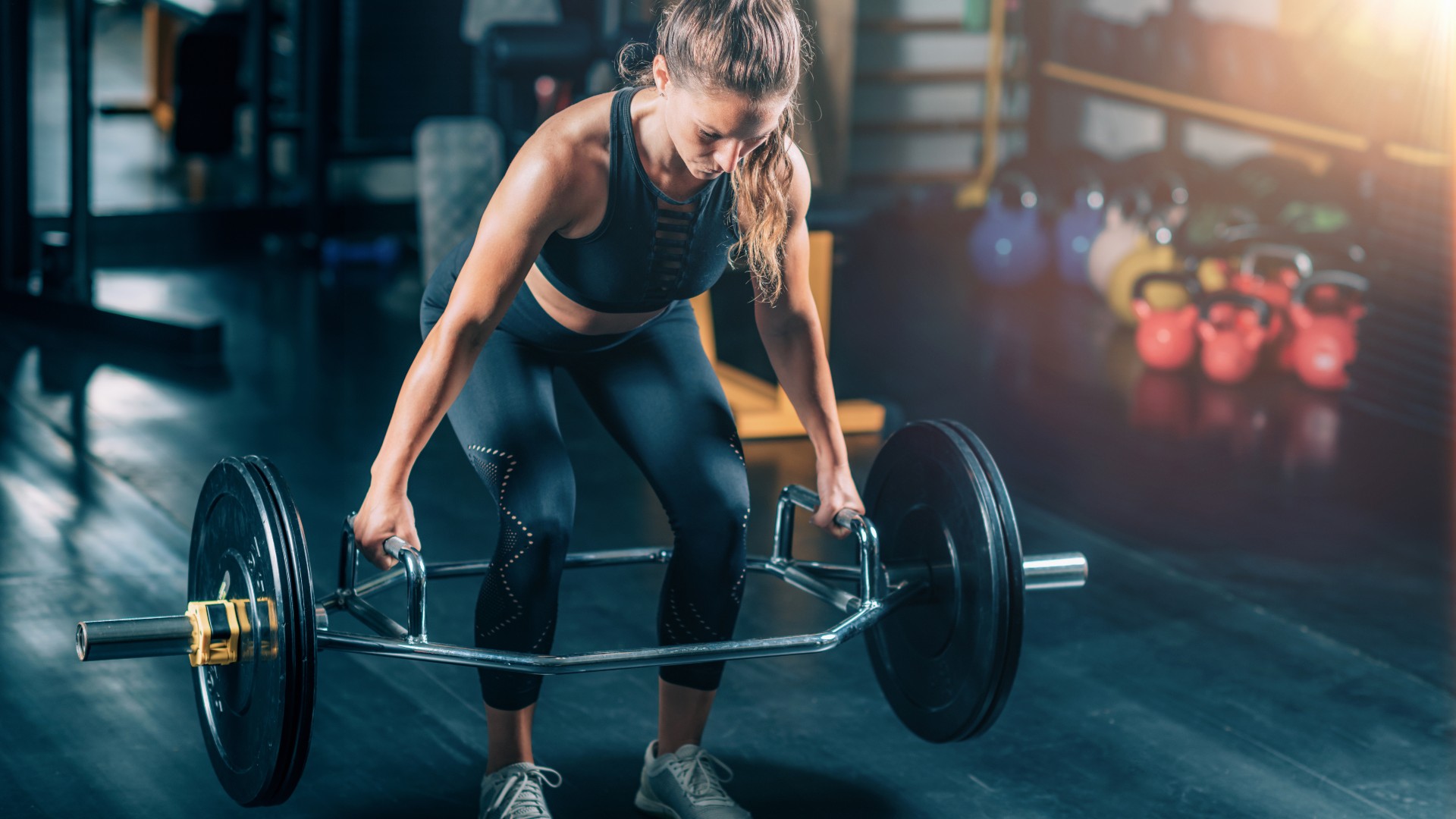
We included this move in our two hip thrust alternatives to try. When done with good form it's a great tool for building strength in your gluteal muscles, hamstrings, and lower back.
- Stand inside the bar with feet hip-width apart
- Bend your knees and grip the bar on either side
- Engage your core and set your shoulders down, weight distributed evenly throughout your feet
- Send your hips up and back
- Drive through your heels and lift the bar to stand upright
- Squeeze your glutes, re-bend the knees, and lower the bar without arching your spine.
5. Bent-over row
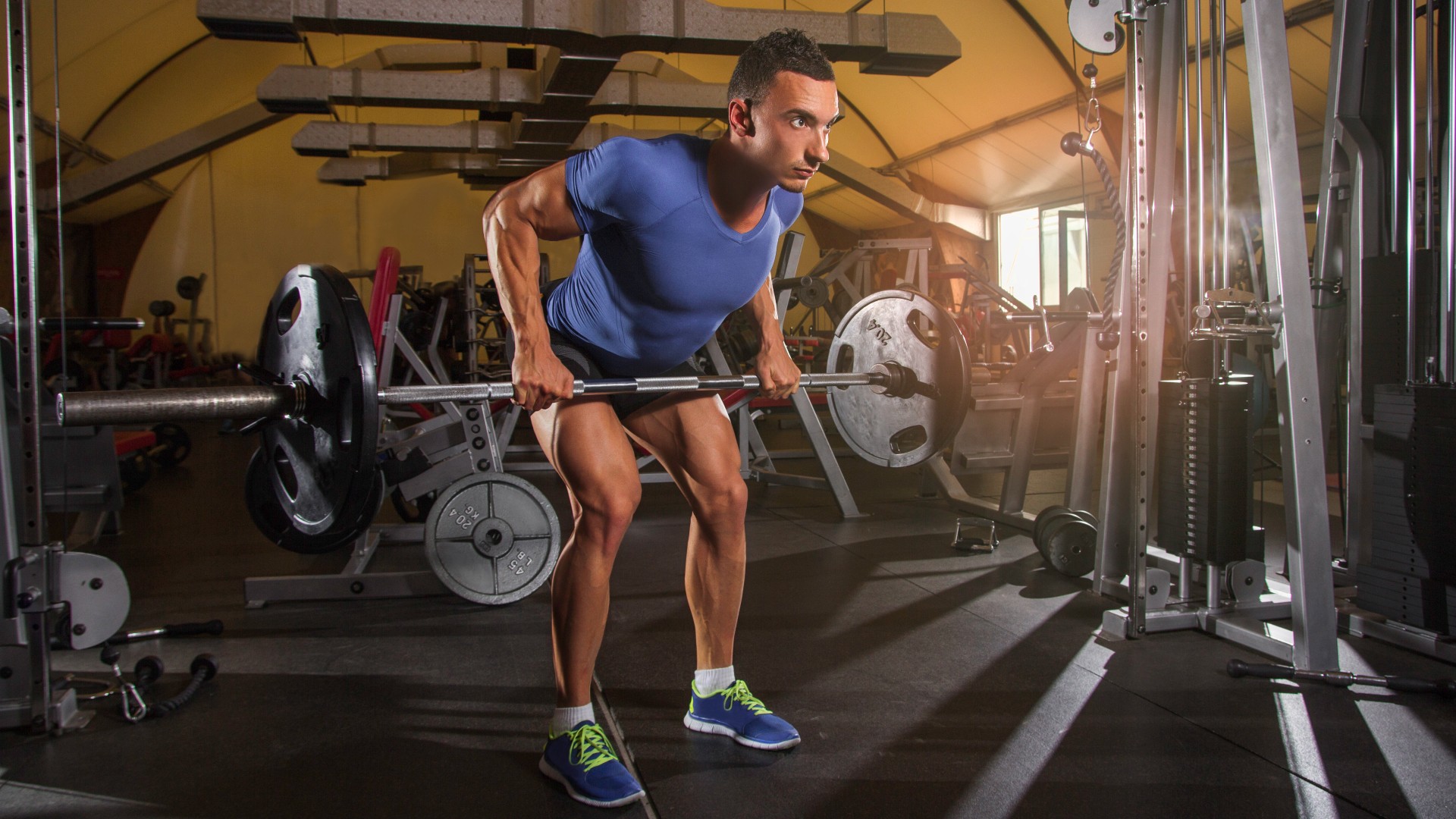
Learn how to do a dumbbell row with good form here. You can use any weight to replace a dumbbell like a barbell or kettlebells.
- Grip your dumbbells in both hands, then hinge forward at your hips, sending your bum backward with your core engaged
- Turn your palms to face each other, then row the weights towards your hips, keeping your arms close to your body
- Pause and squeeze your lats, then slowly lower to the starting position.
If you want to up your body weight workout game, I just tried Chris Hemsworth's 200-rep bodyweight workout, and wow. Also check out — pull-up vs chin-up: Which is better for building strength?

Sam Hopes is a level 3 qualified trainer, a level 2 Reiki practitioner and fitness editor at Tom's Guide. She is also currently undertaking her Yoga For Athletes training course.
Sam has written for various fitness brands and websites over the years and has experience across brands at Future, such as Live Science, Fit&Well, Coach, and T3.
Having coached at fitness studios like F45 and Virgin Active and personal trained, Sam now primarily teaches outdoor bootcamps, bodyweight, calisthenics and kettlebells.
She also coaches mobility and flexibility classes several times a week and believes that true strength comes from a holistic approach to training your body.
Sam has completed two mixed doubles Hyrox competitions in London and the Netherlands and finished her first doubles attempt in 1:11.
